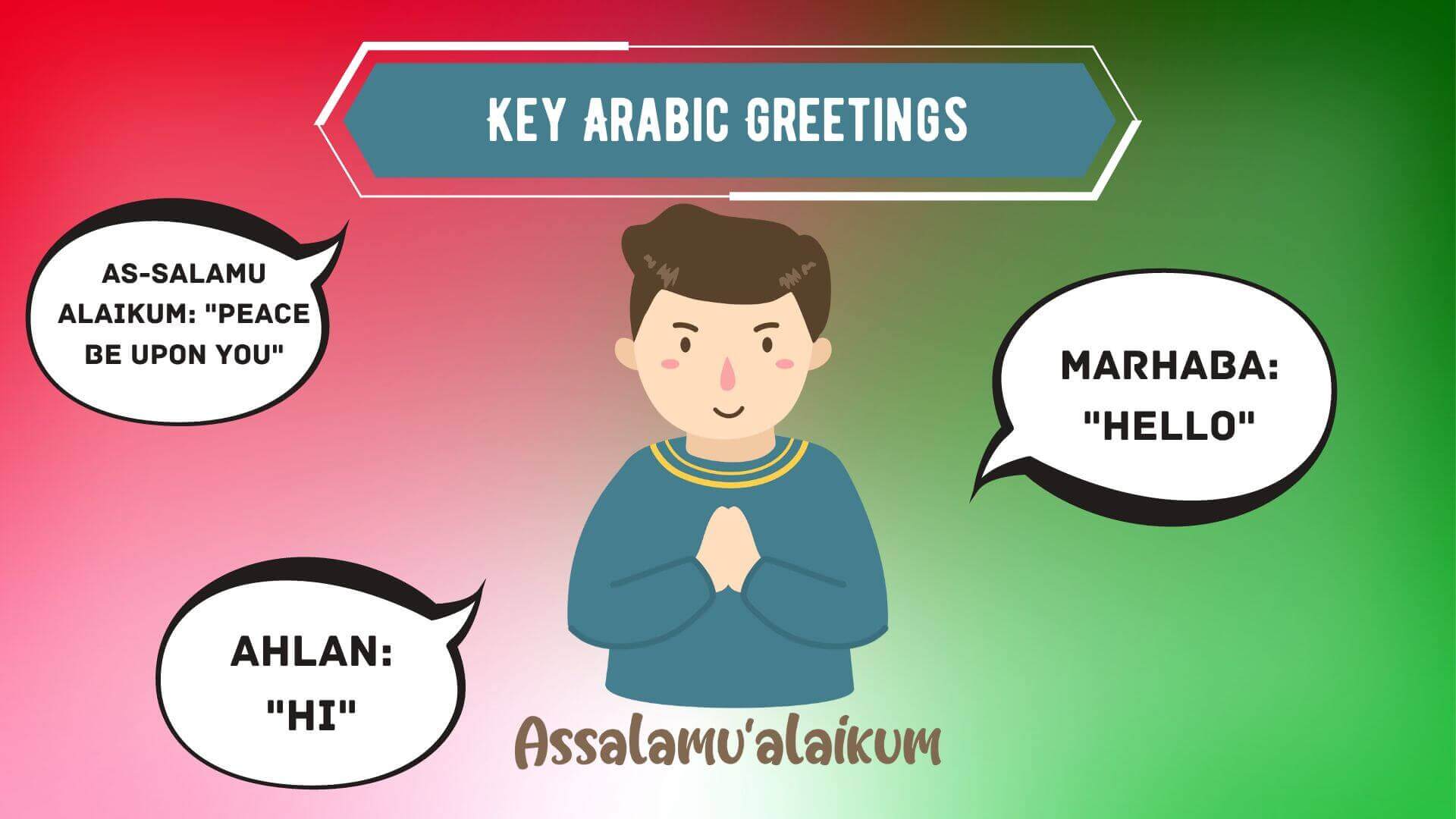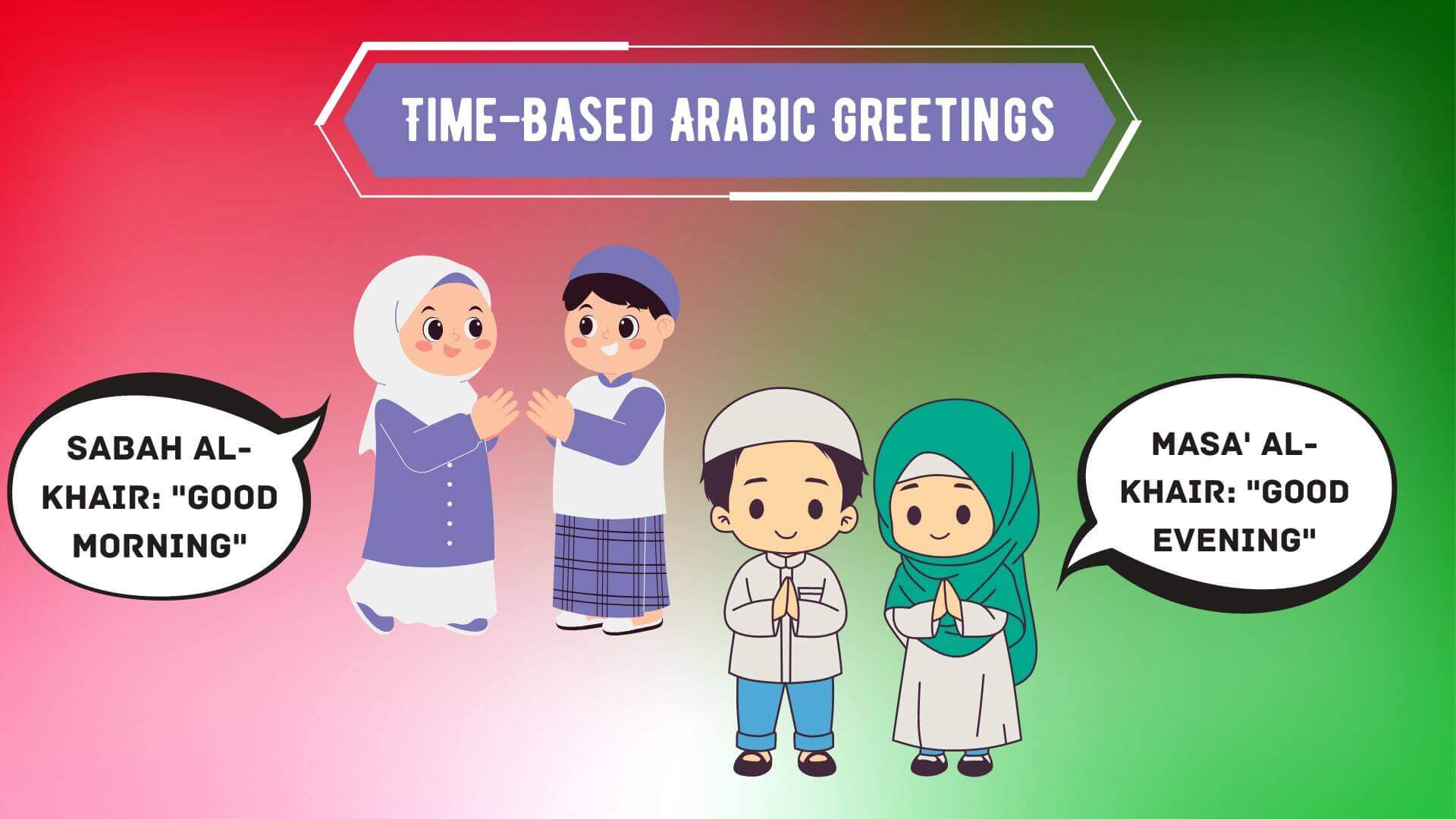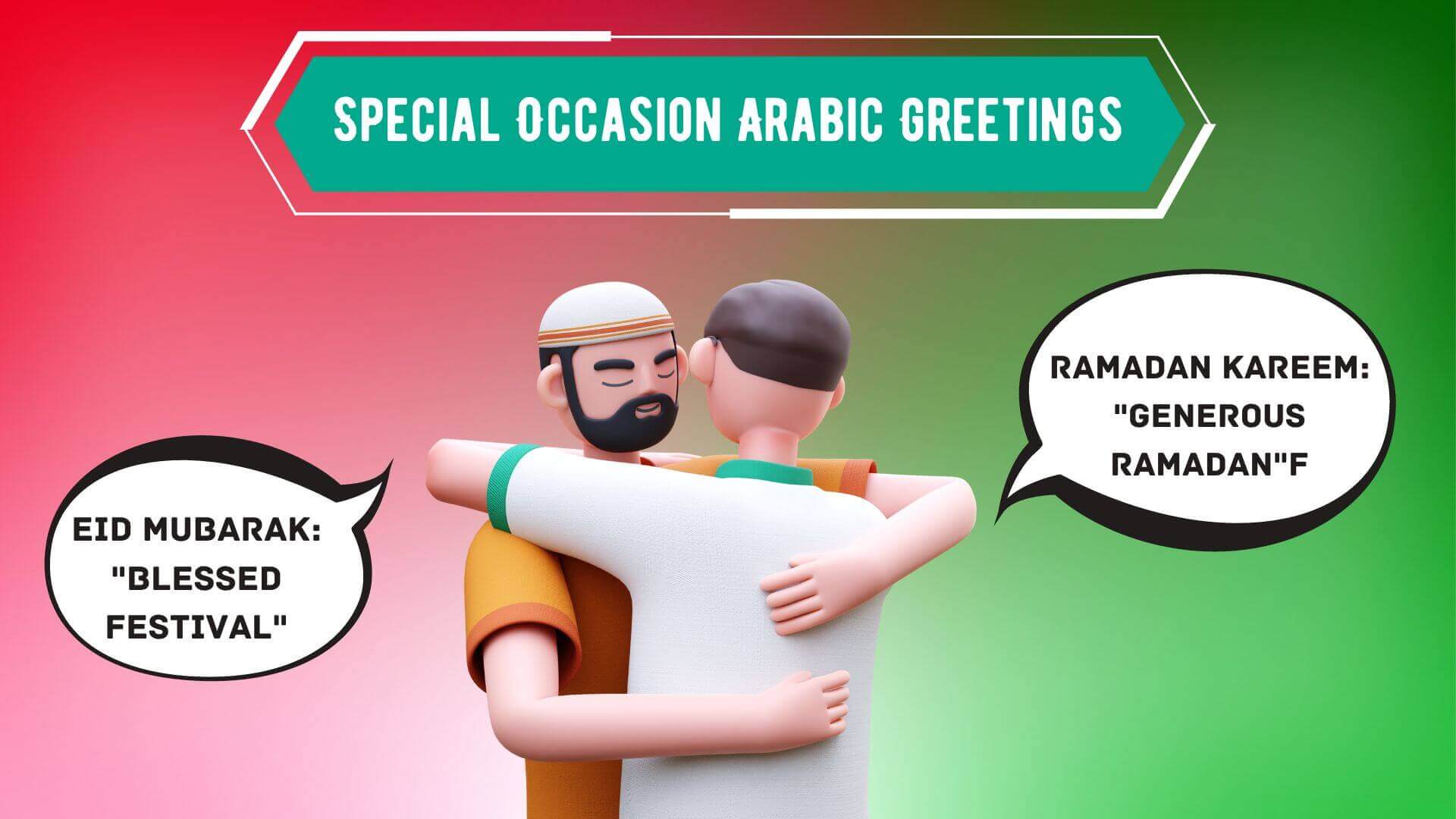In the world of communication, the Arabic language shines with its special greetings. These greetings are more than just saying hello; they show respect and warmth, and they give us a peek into Arab culture. It’s not only about speaking Arabic well, but also about understanding the people and their traditions.
Arabic greetings vary from casual daily use to more elaborate ones in social and religious settings. Each one helps build stronger connections and shows respect. By diving deeper into these greetings, we can see how language reflects cultural values, and why it’s useful to learn them.
Key Arabic Greetings

As-salamu alaikum: “Peace be upon you”
‘As-salamu alaikum,’ means ‘Peace be upon you.’ It’s a deep and meaningful greeting from Islamic tradition. It’s more than just saying hello—it’s a wish for peace to whoever hears it. This greeting is used by Muslims everywhere, no matter what language they speak. It helps bring people together, creating a sense of community and spiritual connection.
When someone says ‘As-salamu alaikum,’ the reply is ‘Wa alaikum as-salam,’ which means ‘And upon you be peace.’ This back-and-forth isn’t just polite; it builds respect and harmony. This way of saying hello crosses borders and is a key part of daily life in Arabic-speaking and Muslim communities around the world.
Marhaba: “Hello”
‘Marhaba’ means ‘hello’ in a simple, warm way. It’s less formal than ‘As-salamu alaikum,’ which means ‘peace be upon you.’ ‘Marhaba’ comes from the Arabic word ‘rahhaba,’ which means ‘to welcome.’ It’s a friendly greeting you can use anytime, anywhere—from a quick chat on the street to a formal event. It’s great for anyone learning Arabic. Just use ‘Marhaba’ to start a conversation; it’s easy and welcoming.
Ahlan: “Hi”
‘Ahlan’ means ‘Hi’ in English. It’s a friendly greeting you’ll hear a lot in Arabic. It comes from ‘Ahl,’ which means people or family. It makes the greeting feel warm and welcoming. You can use ‘Ahlan’ any time of day, and it fits perfectly in a casual chat. Usually, you’ll say it with a smile, making it feel even more inviting. When you greet someone with ‘Ahlan,’ it’s like you’re welcoming them into your circle. It’s simple but makes a big difference in how people connect.
Time-Based Arabic Greetings

Sabah al-khair: “Good morning”
Good morning, or ‘Sabah al-khair,’ is a common Arabic greeting. It starts the day off right, showing respect and positivity. When someone says ‘Sabah al-khair,’ the usual reply is ‘Sabah an-noor,’ which means ‘morning of light.’ This back-and-forth isn’t just polite; it also helps strengthen community ties. It reflects the importance of hospitality in Arabic culture. You’ll hear ‘Sabah al-khair’ everywhere, from offices to schools to casual chats among friends. If you’re new to Arabic, using this phrase can really help you connect with people.
Masa’ al-khair: “Good evening”
Let’s talk about the Arabic greeting ‘Masa’ al-khair,’ which means ‘Good evening.’ It’s used from sunset until nightfall. People across the Arabic-speaking world use it in both social and professional settings as they transition from day to evening. When someone says ‘Masa’ al-khair,’ you should reply with ‘Masa’ al-noor,’ meaning ‘evening of light.’ This exchange is not just polite; it also wishes the other person a pleasant evening, showing the warmth and hospitality of Arabic culture.
Formal Arabic Greetings
Ahlan wa Sahlan: “Welcome”
Ahlan wa sahlan means ‘Welcome.’ It’s a common Arabic greeting that stands for warmth and hospitality. This phrase is a big part of Arabic culture, used when greeting both friends and strangers in any setting.
It literally translates to ‘You are among family and at ease,’ which makes people feel right at home. It creates a friendly vibe, encouraging honest talks and mutual respect. Used everywhere in the Arab world, Ahlan wa sahlan fits almost any situation where you want to make someone feel welcome, showing just how much the locals value hospitality and respect for guests.
TaHiat: “Greetings”
Formal Arabic greetings are key in respectful conversations. They matter a lot in Arabic-speaking areas. A common greeting is ‘As-Salamu Alaykum,’ meaning ‘Peace be upon you.’ People usually reply with ‘Wa-Alaykum As-Salam,’ which means ‘And upon you be peace.’
Other greetings like ‘Marhaban’ or ‘Ahlan wa Sahlan’ warmly welcome someone. It’s also respectful to ask about someone’s well-being with ‘Kayfa Haluk?’ or ‘How are you?’ Knowing these greetings is crucial when talking to Arabic speakers, as it shows respect and understanding of their customs.
Informal Arabic Greetings
Haal: “How are you?”
When you chat in Arabic, a common and friendly way to check on someone is by asking ‘كيف حالك؟’ (kayfa ḥāluk?), meaning ‘How are you?’ This question is everywhere in daily talks. You can use it any time of day, whether you’re talking face-to-face or on the phone. Usually, people reply with ‘بخير, شكراً’ (bikhair, shukran), which means ‘Fine, thank you.’ It’s a simple way to show you care and build a connection, so it’s a good phrase to know if you’re learning Arabic.
Shlonak/Shlonik: “How’s it going?”
‘Shlonak’ is for men and ‘Shlonik’ for women. These are casual ways to ask someone how they’re doing in Arabic. You’ll hear them a lot in the Levant and Gulf areas. They’re a friendly way to start a chat and show you care about the other person’s day. If someone asks you ‘Shlonak?’ or ‘Shlonik?’, you can simply reply ‘Mni7’ or ‘Tamam,’ which mean ‘good’ or ‘fine.’ This kind of talk helps bring people together and shows how important good relationships are in Arabic cultures.
Also Read: Interesting Facts About the Arabic
Special Occasion Arabic Greetings

Eid Mubarak: “Blessed Festival”
Eid Mubarak means ‘Blessed Festival.’ It’s a special greeting people exchange during two major Islamic holidays, Eid al-Fitr and Eid al-Adha. Both festivals are times for joy and a fresh start. Eid al-Fitr comes right after Ramadan, a month when Muslims fast from sunrise to sunset. This festival celebrates the end of fasting and a month of reflection. Eid al-Adha remembers the story of Prophet Ibrahim’s willingness to sacrifice his son as an act of obedience to God. During this festival, Muslims perform Qurbani, which means they sacrifice livestock. Both times are for getting together, praying, and helping others. Saying ‘Eid Mubarak’ is more than just a greeting—it’s a way to wish someone well and strengthen bonds of community and peace.
Ramadan Kareem: “Generous Ramadan”
‘Ramadan Kareem’ means ‘Generous Ramadan.’ It’s a greeting people use during Ramadan, a month important to Muslims. It’s a time when they fast from sunrise to sunset. This phrase isn’t just a hello; it reminds everyone to be generous and thoughtful. During Ramadan, Muslims focus on charity, prayer, and reflection. The greeting helps everyone remember to support each other and stay connected. It’s about sharing good wishes and remembering what’s important during this sacred time.
Additional Distinctive Arabic Greetings
Salam: “Peace”
In Arabic culture, the greeting ‘Salam’ means ‘peace.’ It’s a way to spread goodwill and harmony when people meet. It’s not just a simple hello. It carries deep respect and wishes for the other person’s well-being. Coming from Islamic tradition, ‘Salam’ is a blessing. It shows how much they value peace and tranquility. Whether it’s a casual chat or a formal event, this greeting goes beyond just being polite. It reflects a cultural and spiritual focus on harmony.
Kif Halak: “How are you doing?”
‘Kif halak’ means ‘How are you doing?’ It’s a friendly Arabic greeting used in many Arabic-speaking places. You can use it in casual or formal settings. When you ask ‘Kif halak?’ you’re looking to hear a quick update on someone’s life or health. People might answer with ‘Alhamdulillah,’ meaning they’re doing well, or they might share more about what’s going on with them. This kind of talk helps us connect and shows we respect each other’s culture, strengthening community ties.
Also Read: How to Say “I Love You” in Arabic: A Guide to Different Dialects
Yom Sa’id: “Have a nice day”
‘Yom Sa’id’ means ‘Have a nice day.’ It’s a friendly greeting used often in Arabic-speaking areas. It shows kindness and the wish for someone to enjoy their day. You’ll hear it all over, in different Arabic dialects. The words might sound slightly different depending on where you are, but the meaning stays the same. When you say ‘Yom Sa’id,’ you’re really saying you hope someone’s day goes well. It makes people feel connected and respected. It’s a simple way to make everyday conversations warmer and more meaningful.
Conclusion
Learning Arabic greetings does more than just expand your vocabulary; it helps you connect more deeply with the culture and people. When you know how to say hello both formally and informally, you can communicate better in different settings. Whether it’s a quick chat or a serious meeting, the right greeting sets the tone and can make a big difference. Plus, knowing these phrases helps you fit in better in Arabic-speaking places, improving your friendships and work relationships. As you keep learning Arabic, remember that each greeting isn’t just about words—it’s about making meaningful connections with others. Keep visiting the Translation Blog for more translation articles like this.

